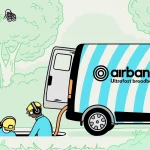Ofcom Consults on Openreach UK Copper Retirement Process

The UK telecoms regulator has today opened a short consultation on their proposal to push back some key decisions regarding the retirement process for Openreach’s (BT) copper lines in favour of fibre optic broadband. In short, Ofcom wants to see a bit more FTTP roll-out take place first (for experience), before they set out a final plan.
At present Openreach are already conducting a number of copper retirement trials in Mildenhall (Suffolk) and Salisbury (Wiltshire) – here, here and here. For example, in Salisbury the process for moving from copper to Fibre-to-the-Premises (FTTP) lines begins once 75% of premises in an exchange are able to receive “full fibre” (target for this is 24 months after roll-out starts and copper switch-off might then occur c.3 years after / on top of that).
Under this approach such a process could start with a “no move back” policy for premises connected with FTTP, followed by a “stop-sell” of copper services to new customers and ultimately full withdrawal. One other result of this is that the operator will also stop providing their own voice products after around 2025 (i.e. shifting the responsibility for delivering this and VoIP on to broadband ISPs and wholesale providers).
Advertisement
Since then Openreach have also announced that they intend to accelerate their plans to move away from the old analogue phone (PSTN / WLR) services and on to a new all-IP network, which will see more than 118 UK exchange locations receiving over 75% coverage via their FTTP broadband ISP technology by June 2021 (here).
At the same time Ofcom have been busy conducting their Wholesale Fixed Telecoms Market Review 2021-26 (FTMR), which proposes major changes to help boost investment in FTTP broadband and high capacity Ethernet (leased line) services for both the residential and business connectivity markets. As part of that it is was also considering proposals for the copper retirement process.
An important aspect of the prior proposals includes a period of regulatory transition after which, when Openreach has completed ultrafast coverage of an exchange area, Ofcom would lift the existing charge control on the anchor copper service. At that point, only the fibre charge control would apply. However, Ofcom notes that there may be “very limited circumstances in which Openreach may not be able to connect some premises in an exchange area with ultrafast services, despite all reasonable efforts.”
The new consultation is thus seeking views on a revised proposal, which would “wait until after our final decisions in the WFTMR statement to consider how to define the circumstances in which premises can be excluded from the definition of a completed ultrafast exchange in which the copper charge control can be lifted.”
Advertisement
Ofcom’s Statement
Based on our January WFTMR consultation proposals and Openreach’s announced plans, we expect that the earliest that the copper charge control will be removed will be in December 2022 in Salisbury, and in June 2023 in a further 117 exchange areas. We expect Openreach to be able to practicably complete ultrafast coverage in these areas by that time and trigger the removal of the copper charge control.
However, Openreach’s fibre roll-out is at its relatively early stages, and waiting until after our final WFTMR decisions to define the detail of circumstances in which premises can be excluded would allow us to better consider roll-out experience, whilst still providing the industry and its customers with certainty and transparency.
The new consultation will be open for responses until 3rd September 2020 and they intend to publish the outcome of this as part of the WFTMR statement in Q4 2020/21, which means that an additional consultation will be needed after that point in order to set out the final process. We think this makes sense given that Openreach’s trials are only just starting and more feedback will be needed to help validate their planned approaches.
On the other hand it would have been nice to have this all neatly sorted in time for the WFTMR statement.
Mark is a professional technology writer, IT consultant and computer engineer from Dorset (England), he also founded ISPreview in 1999 and enjoys analysing the latest telecoms and broadband developments. Find me on X (Twitter), Mastodon, Facebook, BlueSky, Threads.net and Linkedin.
« Broadband ISP Virgin Media UK Suffers Large London Outage UPDATE3
O2 UK Finally Refunds Mobile Customers.. AFTER 15 YEARS »























































Is there anything from Virgin Media about their copper retirement process? Do they even have one? What would the answer to this question say about their prospects for the future compared to a more more reliable technology from Openreach?
Virgin Media do use it too it’s equivalent to Openreach’s FTTC VDSL2 but with Virgin Media It’s called HFC Hybrid Fibre Coax it’s basically cooper cable but thicker It’s called Fibre to the Cabinet. It’s Fibre Optical cable the cabinet they are also replacing HFC with FTTP they call it project lightening. HFC is basically the same cable used for Satellite and Aerials.
It will be years before all copper is gone from any network. In the case of BT i can think of a few exchanges which will never reach the 75% FTTP capable figure which is mentioned. FTTC is not even available to 100% of premises so to think everyone is going to be full fibre in the next decade is just dreaming IMO.
Virgin Media i also imagine have no real rush, plans or need to scrap copper in their network considering with economical upgrades it is capable of vastly more than BTs copper network is at relatively small financial outlay.
Virgin Media use coaxial copper cable over a fairly short distance, which gives it a lot more life than Openreach’s thin pieces of twisted pair copper wire. This is why you’ll be able to get Gigabit speeds via the DOCSIS 3.1 upgrade and faster speeds may be possible in the future (although uploads remain hobbled).
Suffice to say I suspect they’ll be holding on to their coax for awhile yet, although FTTP remains superior and so Virgin Media may have to get used to being slower for a change.. but not for a fair few years yet as FTTP still has a lot of coverage to build.
Without replacing the coaxial/metallic part VM could do multiple gigabits per second symmetrical, and could deliver 10 Gbit downloads and 500 Mbit uploads mostly by upgrading the stuff in cabinets and homes.
It’ll be replaced when it makes business sense to do so.
@Dave Scott
‘Virgin Media do use it too it’s equivalent to Openreach’s FTTC VDSL2 but with Virgin Media It’s called HFC Hybrid Fibre Coax it’s basically cooper cable but thicker It’s called Fibre to the Cabinet.’
No, it’s shielded copper laminated steel. It’s called Fibre to the Node, not Cabinet, and is quite different from the unshielded twisted pair Openreach use, not least because it’s not limited by distance thanks to amplification. They are both metal but very different in terms of topology and characteristics.
‘It’s Fibre Optical cable the cabinet they are also replacing HFC with FTTP they call it project lightening.’
Lightning is not replacement of HFC with FTTP it’s brand new build of HFC and FTTP to areas that previous had no cable service.
‘HFC is basically the same cable used for Satellite and Aerials.’
Apart from the ‘hybrid’ and ‘fibre’ parts yes indeed.
About time Openreach did an Order 227.
Presumably very long lines that currently can’t receive either ADSL or VDSL are one of the constraints Ofcom have in mind? It would be nice to think they will all be prioritised for FTTP, but I can’t see that happening in the timescales talked about here.
The eventual retirement of ADSL will mean they can use the frequencies for that to send a phone signal down the line.
How are they going to send a phone signal down an all-copper line if not via ADSL or the current plain old telephone service that sits below ADSL in the spectrum anyway, JPK?
The options are voice over ADSL, and where ADSL inadequate due to line length replacement with a partial or full fibre solution or even a wireless solution, likely cellular.
JPK
Retiring ADSL won’t impact phone signal.
The frequency allocation is
DC voltage over pair
POTS – analogue phones
ADSL – and variants
VDSL – and variants
GFast
Whilst with the retirement of POTS and ADSL it would be possible to reprofile VDSL to use theIbandwidth I would **guess** they won’t bother. This was the idea behind LRVDSL and this didn’t really work.
That what @CarlT thanks buddy
By 2025 they aim for VoIP Over Fibre to the premises
No by 2025 they aim for VOIP, by any means.
VOIP over ADSL, VDSL, G.Fast or FTTP.
No chance of everyone having FTTP by 2025. That’s not even a remote ambition.
They would like to turn PSTN off by then, leaving VOIP over the current broadband connection, however that is delivered.
That is not true. Openreach aim to have the PSTN, Public Switched Telephone Network, switched off.
That means Voice over IP or cellular. How customers get that VoIP isn’t relevant to the switch off as long as they get it and it certainly isn’t Fibre to the Premises. EE could provide cellular service and that’ll do as long as the coverage is there.
I’m writing it properly this time as the constant misuse of capitalisation was making my eyebrows twitch.
Why is there such a huge reluctance for telco’s to provide service to a small group of customers living further out from cabinets or even on exchange only lines?
Surely a longer fibre from the nearest cab with a PON (requires no power?) And then FTTP those group of customers… They would all be so delighted. Even if it was the lower end of FTTP speeds achievable.
Scenario: Huawei FTTC cabinet serving 300 houses. Small cluster of houses up the road still on dreadful ADSL etc.
Why can’t a fibre be taken from a Huawei cab and fed up to those houses? The PON requires no power. The PON lives under the pavement manhole hatch? Therefore no cabinets/equipment/power consideration needed.
It would seems simple to me that 99.9% houses are likely reachable for FTTP. Even ones that couldn’t get FTTC.
Am I missing something or is this just sheer laziness/unwillingness here?
They do.
https://www.ispreview.co.uk/index.php/2019/10/new-openreach-trials-bring-full-fibre-to-remote-rural-uk-villages.html
and
https://www.ispreview.co.uk/index.php/2019/09/a-look-at-openreachs-compact-fttp-broadband-ont-and-mini-olt.html
The 1200 metres limits of the cabinet was understood, hence over the half the BDUK budgets were set aside for in-fill activity.
The gaming of costs and capital meant FTTP was ignored for sometime, (BT withdrew from FTTP from 2013 until about 2016) and now folk are having to fight for it.
The money is in the system, but it needs constant pestering to get the work done
It’s expensive per premises passed and our telecomms providers are almost entirely focused around profit, so unwillingness that makes complete sense.
Borrowing £20k to make an extra £10 a month from a 4 property hamlet ensuring over 20 years to pay back the loan ignoring interest isn’t a great business model.
Makes much more sense to serve or let someone else serve them wirelessly or better yet let the taxpayer pick up the tab alongside other customers subsidising by paying more for the same services while costing considerably less to serve.
When you know the last option is likely it’s a fiduciary duty to wait for the opportunity. Note that waiting is the operative word here. Whatever others may tell you BT are paying a fair whack of interest on the cash and it’s not at their sole discretion whether to spend it or not, or how to spend it.
CarlT, while it gets more expensive, it nothing like what was portrayed pre-2015.
As late as 2016 BT MD was stating FTTC was £500 per passed (CMS inquiry 2016) in her oral evidence, then corrected in the written, where the £25k cab/fibre path was confirmed.
The Capital Deferral is in the cost recovery model so BT is assuming this money will be spent on the network. Openreach remains a regulated monopoly and a B-USO provider. Some allowance in your thinking is needed.
I think Ofcom will push any PST sunset date back to 2040. Much if this will have been driven by the sub-optimal deployment of FTTC-Cure and in-ability to complete FTTP in-fill. OR will pay a heavy price for BT Groups gambit.
I do not understand given your experience in Huntslett, why your so keen to pull the ladder up on so many ~1m who finds themselves in not to dis-similar position to you in 2011-15. If gap funding was working then most of the phase 1 BDUK can be re-invested to complete these works.
OR remains a regulated monopoly. BT Group lost its way for a while. We can see that here as we can in the Italian accounting fraud.
NGA – you are the Alex Jones of broadband coverage.
I pull up the ladder for no-one, I just say it like it is and point out when people are talking nonsense – such as for instance claiming that BT can take money that isn’t theirs and spend it without the agreement of those who the money belongs to.
They. Can’t. Build. More. Using. That. Money. Without. Contracts.
You know this and keep ignoring it.
You have failed utterly to prove malfeasance on the part of BT. You know this, too, but keep making out like it’s an open and shut case.
May I recommend going back to a conspiracy theory site like the one I allowed myself to be dragged into in 2012, an error on my part. It ended up with zero conspiracy, just some plain old-fashioned incompetence and miscommunication. How dull.
Regarding Hunslet 82 – FTTC, FTTP and cable available now. All commercial deployments. Not a penny of taxpayer money, and lots of punters happily paying commercial rates alongside council tax to subsidise rural areas.
With that, I again reiterate why you get so little traction on these discussions.
You bring nothing new and they are boring. You’re like an obsessed anti-vaxxer with perilously little evidence, a few ‘greatest hits’ quotes, a bunch of rumour and innuendo and a bunch of claims that simply have no basis in facts available to any of the rest of us via FOIs or other means.
Enjoy your retirement, get over the non-renewal of your DCMS contract and enjoy life. This will all come out in the wash and, depending on what they want to do, local authorities will either get back their cash with interest or get the increased coverage. Your constant ranting on here about how BT should unilaterally spend local authorities’, central government’s and the ERDF’s money isn’t going to get it done any more quickly.
I don’t think you understand CarlT I mean you should really look at on Wikipedia Google an YouTube. I have a green cabinet too what you call modes the bigger green cabinets are Openreach’s and the smaller green lighter cabinets are Virgin Media’s yes they do use nodes the node is underground and green cabinets normally are on the side of the street. And you say it isn’t Cooper the electrical signals can’t travel through steel. Trust me it’s cooper I it’s like what that Admin says Mark Jackson
@Dave Scott
What is Cooper?
dave scott note sure what you are on about here
Before you say am nodes come in 2 types the underground node or street cabinet FTTC and FTTN are nearly the seem but with FTTN the cabinets further away
There is no such think as FTTN its FTTP -= FTTP is designed using an aggregation node as you have to find a path back to the exchange / Headend for FTTP to work – for FTTC you only have to find a path back to the cab (and thia is proably blown fibre tubing) – that is why you cannot use the Fibre to the cabinet to build an network onward from the FTTC cab – it wont work as the fTTP has to find a path back to the headend for it to work
Steel can’t conduct electricity huh? It isn’t good at it but is certainly conductive.
My exact words were ‘No, it’s shielded copper laminated steel.’
As a fan of Wikipedia and Google use them to research the skin effect. You should understand why the steel doesn’t matter that much given the copper lamination.
Probably good to Google ‘lamination’ too.
A little knowledge is probably a bad idea but read this, Dave.
https://www.virginmedia.com/content/dam/virginmedia/dotcom/images/shop/downloads/New-Build-Handbook-v1-63.pdf
Do pay attention to section 15. The part discussing the nodal cabinets you think belong to Openreach.
With that I’m done with this part.
Dave – for whatever reason you’ve come on here, patronised people, written a bunch of utter nonsense and rudely shot down those who disagree.
You haven’t a clue what you’re talking about and are quoting random sources from the Internet which are in some cases just wrong and in others inaccurate.
I don’t understand your motivation for doing so, however I am happy to assist you with remedying this. The above will give you a feel for how the Virgin Media network is built. Nothing ‘active’ goes underground. HFC nodes are active equipment. There are a very few amplifiers that might still be underground however VM have been trying to get them out of there and into cabinets – the document explains why.
The FTTP nodes come in a couple of varieties, the virtual hubs are an Optical Line Terminator in a cabinet. They are huge grey cabinets that are powered. The smaller hubs are similar to Openreach aggregation nodes and smaller distribution nodes but are within cabinets not underground or on poles.
Lastly, I did smile inside when told I was clueless. Here are a couple of presentations I’ve given on cable broadband evolution and next generation access networks respectively.
https://drive.google.com/file/d/1afE8IEonr8tIWae_VIQQSMEtA2ODrVsv/view?usp=sharing
https://drive.google.com/file/d/1ILPWLpi_5X5mVaRKSdo88MVpE-ED0lO7/view?usp=sharing
I can’t claim to be an expert but I suspect I know more about these matters than your good self, nothing personal, or a specialist in credit-based products, much as he knows far more than I about credit-based products.
Happy reading. Hope to see you further along the Dunning-Kruger curve soon.
Carl now setting lockdown reading homework. Public service education at its best 🙂
*Bows*
Test next week.
CarlT
Thanks for referencing the VM new installs document.
This is probably the most unread document in the whole of telecoms.
My brother works in new build developments and not ONCE have Virgin Media ever been interested in connecting any new streets, even when VM have cabinets and CATV manholes everywhere already.
One property, the VM cabinet was only a few metres from the front door and they refused service.
Even if somebody was to pay for all this extensive work, VM are the most disinterested company ever in expansion and throwing away an open goal does not bother them.
Why do VM behave like this? Customers are in despair over VM ineptitude. It is such a shame.
Even project lightning is quite a disaster in my opinion. In my area; only the roughest run down estates have been covered by lightning and so many easy-win opportunities lost.
VM planners surely need guide dogs.
Before you say am nodes come in 2 types the underground node or street cabinet FTTC and FTTN are nearly the seem but with FTTN the cabinets further away
@DS – who has a FTTN node cabinet?
I think you are mistaken.
ave scott note sure what you are on about here
Before you say am nodes come in 2 types the underground node or street cabinet FTTC and FTTN are nearly the seem but with FTTN the cabinets further away
There is no such think as FTTN its FTTP -= FTTP is designed using an aggregation node as you have to find a path back to the exchange / Headend for FTTP to work – for FTTC you only have to find a path back to the cab (and thia is proably blown fibre tubing) – that is why you cannot use the Fibre to the cabinet to build an network onward from the FTTC cab – it wont work as the fTTP has to find a path back to the headend for it to work
Virgin Media’s HFC is FTTN, both. Fibre to a node/neighbourhood with intermediate cabinets between the node and most of the homes it serves that amplify and distribute signals.
The kit that turns the optical signals into RF and the reverse on the upstream path is actually called an optical node.
Obviously not to be confused with Openreach aggregation nodes.
Fibre to the Cabinet FTTC Fibre to the Node FTTN Fibre to the premises FTTP Fibre to the building FTTH Fibre to
the Home FTTP Definitions
FTTC – Fibre to the curb/cabinet.
FTTN – Fibre to the node.
Most of the current UK network upgrades are upgrading to an FTTC or FTTN set up, where fibre cables connect the local exchange to a street cabinet or pole. From that point to the premises, information must travel over copper wires.
FTTB – Fibre to the building.
Companies like Hyperoptic have made a niche for themselves by building a network where superfast fibre broadband cables connect multi-dwelling buildings such as apartments and offices. The connection from the boundary of the building to the end user may still use other types of cable.
FTTP – Fibre to the premises OR Fibre to the pole.
The term FTTP has become ambiguous, with two drastically different meanings. That’s why many providers don’t use it anymore. Crucially however, Openreach use the term FTTP to mean Fibre to the premises.
FTTH – Fibre to the home.
FTTH is the gold standard for domestic network connections, with fibre cables connecting the exchange all the way to the home.
https://www.finder.com/uk/broadband-plans/fibre-connection-guide-fttp-fttb-ftth-fttc-fttn
It’s seem to everyone here is clueless
The writer of that article:
‘Chris Lilly is a publisher at finder.com. He’s a specialist in credit-based products including business and personal loans, mortgages and credit cards, and is passionate about helping UK consumers make informed decisions about their borrowing. In his spare time Chris likes forcing his kids to exercise more.’
Not sure if trolling or not but I have way better things to do than educate on the rest of the inaccuracies.
May come back to this later to ensure that people using the Google Machine don’t read that stuff and take it as fact.
Perhaps someone should teach ASA about the meaning of “fibre broadband”!
Perhaps someone should point out what the ASA have to do with anything here?
Dealing with that article.
There is no confusion in the UK over whether FTTC means Fibre To The Cabinet or Curb because we don’t spell those things on the edges of pavements that way – they’re kerbs outside of North America. Lazy copy/paste from some America-centric source.
UK upgrades outside of FTTP are all FTTC as far as Openreach go. No intermediate cabinets involved and in our English FTTC = To The Cabinet. Lazy copy/paste.
FTTP in the UK isn’t ambiguous. We’ve no Fibre To The Pole where the circuits go metallic in use now and only ever have very briefly in G.fast trials. It’s far more common in, you guessed it, North America as they’ve much more kit on poles than we do. We don’t use pole-mounted active equipment. Lazy copy/paste from somewhere. Again.
FTTB is correct. FTTH and FTTP may be used interchangeably, however the UK has elected to use FTTP much more.
So I’m afraid it’s the person who wrote that article that needs to consider learning more about the subject matter.
As an aside patronising people based on Wikipedia/YouTube/Google is a bad idea as a matter of course.
Facepalm 🙁
That finder page is a classic SEO content to try and do well on Google and drive people towards links that make a site money.
@CarlT:
“Perhaps someone should point out what the ASA have to do with anything here?
Dealing with that article.”
Calm down and take a break! This was meant to be a joke, don’t be so serious all the time 🙂
Anyway, it is also relevant to this story, because many readers wrongly believe they already got fibre broadband so will wonder what Ofcom is on about with this.
I’m wondering how they’ll handle customers without broadband nor a mobile, such as my grandmother?
I mention mobiles because of power failures and I know current Openreach ONTs don’t have battery backup included.
Probably by providing a basic broadband line with a router and analogue port I guess. Otherwise migrate to mobile. These two approaches for All-IP were done by Swisscom over the last few years. I think there are quite a lot of cost savings through copper retirement and All-IP so I’m surprised to hear OR are still at the trial phase.
https://reports.swisscom.ch/en/2017/ip-central
By providing a very basic IP service walled off from the Internet and capable of supporting a channel or two of VoIP.
The vast majority of homes only have cordless phones and so the benefit of a PSTN line working during a power failure is mostly moot.
@James @125us
This is what I fear, my grandmother is the type of person who’d unplug their life support machine, only seeing it as a Blinkenlights/machine which goes beep.
And no, I’m not exaggerating, she did unplug a couple of devices which were given to her in case of emergencies including a mobile.
I have a feeling I’ll need to put any modem in a safe and hardwire the extension to the mains.
On a side note, we always make sure to keep a ‘basic’ wired phone for power failures.
Do not assume that a corded phone will always work. About a year ago I had three power failures and on each occasion there was no dial tone on my Virgin Media landline.
If you have VoIP all the relevant kit needs battery backup to work, like the ONT, router and base unit (if using a cordless phone). As it’s unlikely that most people will have such backup in place a mobile phone would be the best option.
@Roger_Gooner
Maybe it’s a virgin media related issue, cabinet issue or we’ve been lucky, I’ve only ever used Openreach.
Ordinarily I’d agree that a mobile is the easiest for most people, but again I tried her with a mobile and she’d just unplug it and let the battery die.
Perhaps Openreach should still keep an SKU of ONTs with BBUs for those where a mobile is unsuitable, etc.
Let’s get rid of the aluminium in the network first
By replacing it with fibre. Indeed.
Which would make far more sense on every level that replacing stretches of aluminimum with copper.
Its never going to make sense to replace Al with anything but F as part of a general wide rolllout. The cost of piecemeal changes would be insane.
I do apologise to everyone on here. I agree Completely with CarlT if you look deeper on the internet. It’s completely complex with ASA they should just call Fibre Broadband just Fibre to the Cabinet and FTTP just call it Fibre to the Premise and they should call HFC Just Hybrid Fbre Coax a mix of fibre optic cable and Coaxial Cable.
I can delete all my comments I would bit I can’t
At my rural exchange (EABUR) BT layed less than 500m of Fibre down the access rd to a Cabinet on the main rd. Big News “Fibre has arrived at Bures”
Needless to say customers who are 3 and 4 miles away, saw no difference in speed on their exiting copper
Just one big PR exercise, so going over to VOIP could be a distant dream
I rather use Voice Over IP because it’s cheaper then regular Phone Calls. Plus its fit for the 21st Century. I have done my research on everything I am not that great when it come to technology.
I should read more about FTTC FTTP FTTN and Virgin Media’s DOCSIS 3.1 and there HFC Virgin’s Mix of Fibre Optic cable’s and Coaxial Cables.
I have made jackass of myself Lol